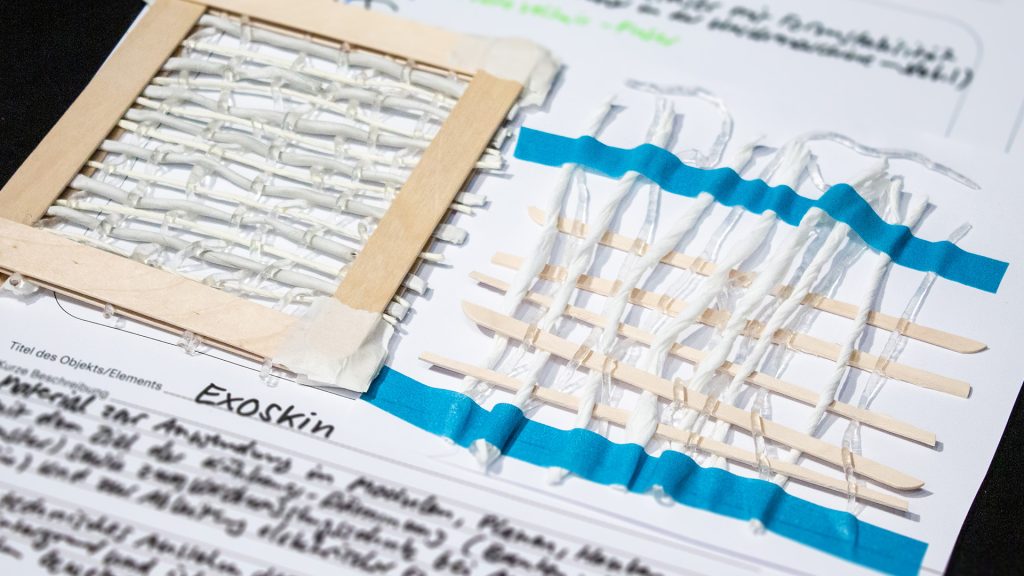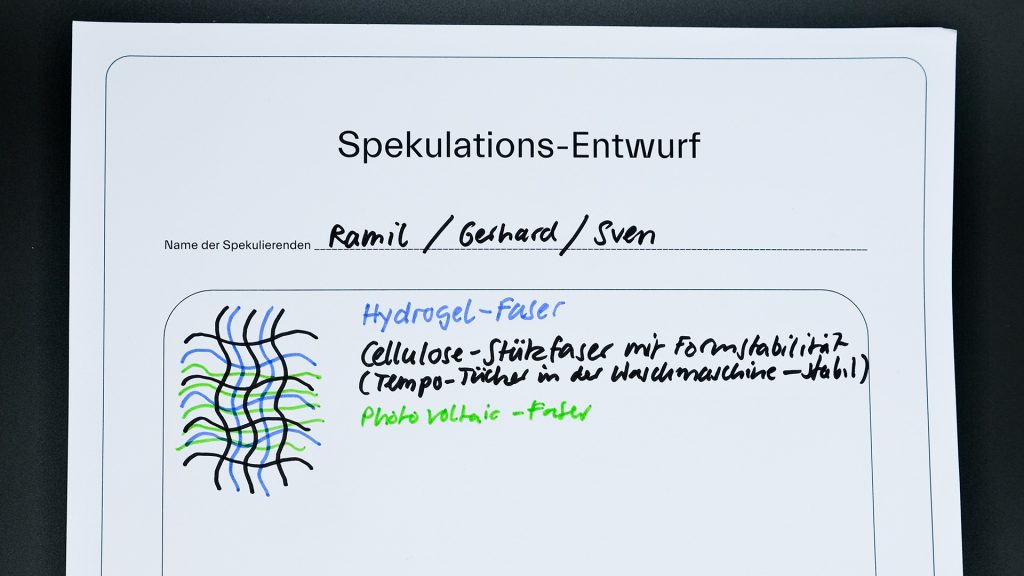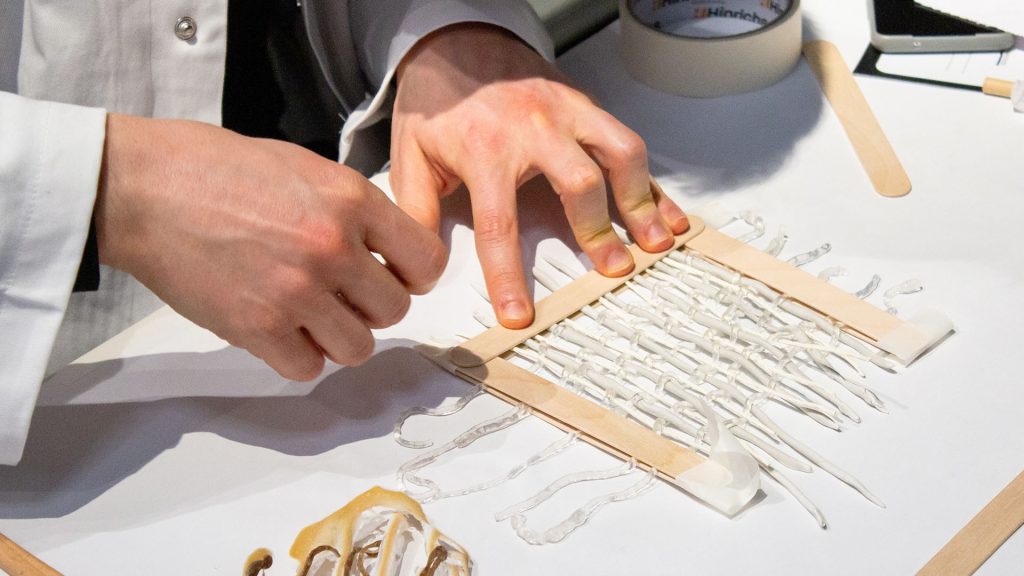
Material: Hydrogel
Functions: Cooling buildings, preventing water evaporation
Application: As a module, tarpaulin, film, hood, or roller blind


One group developed a new material in the workshop, applying their knowledge as architects, designers, and gardeners. Their »Exoskin« is a fabric made of hydrogel and support fibers. The material could be used in walls or windows to cool buildings. In addition, it could serve as a foil to prevent evaporation in outdoor water reservoirs. Further functions are possible if additional fibers are incorporated: Photovoltaic fibers could dissipate electrical energy; thermochromic pigments could provide sun protection. All of these functions are hidden in the material. The product does not look technical; instead, at first glance, it appears to be a simple fabric.
»We wanted a material that fades into the background, whose function is not obvious, one that could look like a normal T-shirt, for example. ›Exoskin‹ is a composite fabric made of hydrogel and support fibers. We used cellulose (handkerchiefs) and plasticine. Wood could also be used. The material could also contain a photovoltaic fiber to dissipate and store energy.»
The idea is to apply it universally, so it could be used to clad existing buildings – windows and walls. One initial idea was also to cover outdoor water reservoirs with a foil that prevents evaporation, because water evaporation is one of the biggest problems in such installations. We would then have two functions: cooling down buildings and preventing evaporation. And then we had the idea of incorporating thermosensitive pigments to ensure that a fabric like this, perhaps as a roller blind in front of a window, becomes semitransparent starting at a certain temperature or a specific level of light irradiation, so that it can also be optically modulated.«